California continues to break new ground in terms of integrating higher levels of solar, and sometimes the records come when you least expect them. Data from the California Independent System Operator (CAISO) shows that on March 16 solar output peaked at 10,765 megawatts around 2:45 PM local time.
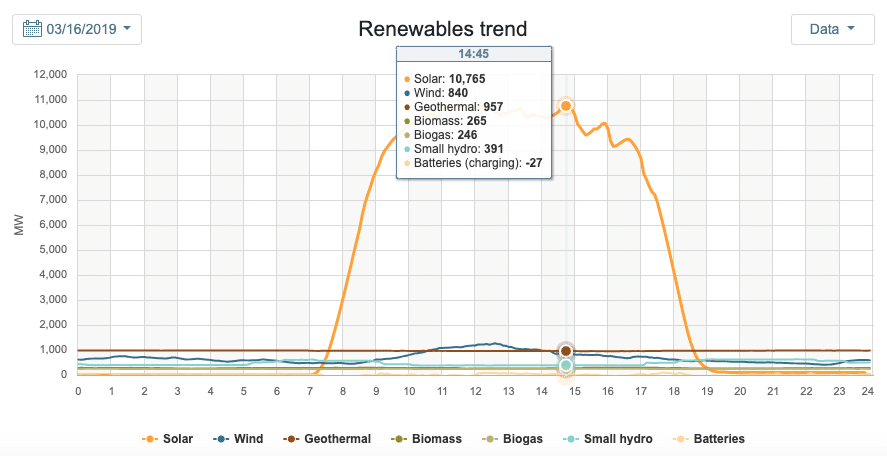
According to several sources, this was the highest level since California set its previous record of 10,740 MW in June 2018 – despite it being four days before the Spring Equinox.
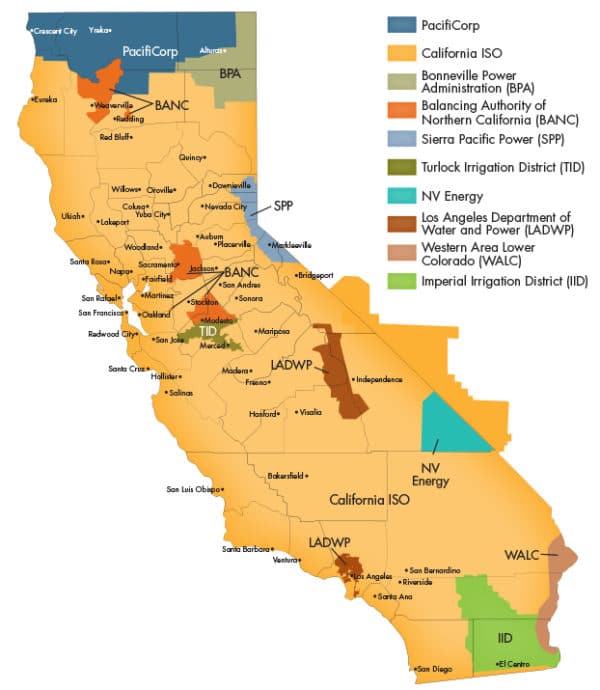 Notably, these two figures only include solar connected to the transmission grid, and not behind-the-meter solar. Based on previous estimates, rooftop and other smaller solar installations connected to the distribution grid likely produced around 50% more solar, meaning that the total output was likely somewhere around 16,000 MW.
Notably, these two figures only include solar connected to the transmission grid, and not behind-the-meter solar. Based on previous estimates, rooftop and other smaller solar installations connected to the distribution grid likely produced around 50% more solar, meaning that the total output was likely somewhere around 16,000 MW.
Nor does this include all of California, as the cities of Los Angeles and Sacramento are among the areas that are not part of the CAISO grid.
Deployment & demand
It should be no surprise that California is setting new records, as the state continues to deploy the most solar PV of any U.S. state. According to Wood Mackenzie Power & Renewables and Solar Energy Industries Association (SEIA), California deployed 3.4 GW of solar in 2018 – more than three times as much as any other state.
This enabled California to meet more than 14% of annual electric demand with in-state solar, according to a pv magazine analysis of data from the U.S. Department of Energy. But the portion of demand met with renewables in the middle of the day, when the sun is shining – and particularly on a cool, weekend day in Spring – is going to be much greater.
According to CAISO data, demand at 2:45 PM on Saturday – minus behind-the-meter solar – was only around 18 GW, meaning that utility-scale solar was meeting 59% of total demand.
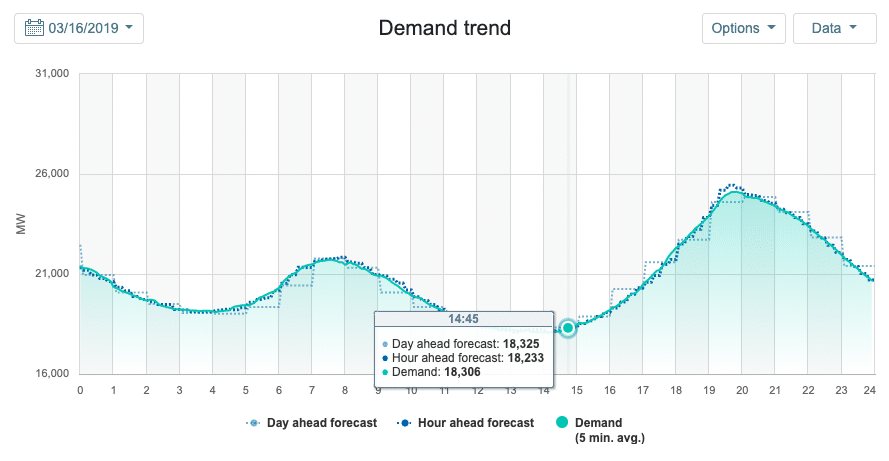
Flexibility and exports
High levels of solar and wind output mean that the rest of the system must maximize its flexibility – something that CAISO has struggled to do in the past. When we looked at a previous day of record solar and wind output on May 26, 2018, we found that many sources of power such as the state’s hydro plants were not showing much flexibility.
Furthermore, CAISO was still importing power at mid-day, during maximum solar and wind output – a pattern that was repeated on other days of high renewable energy output. A further analysis pointed to inflexible contracts signed by the state’s investor-owned utilities with out-of-state generators being a main culprit.
However, the analysis of March 18, 2019 is different, and CAISO data shows a net export of power during the periods of highest solar output, an encouraging development.
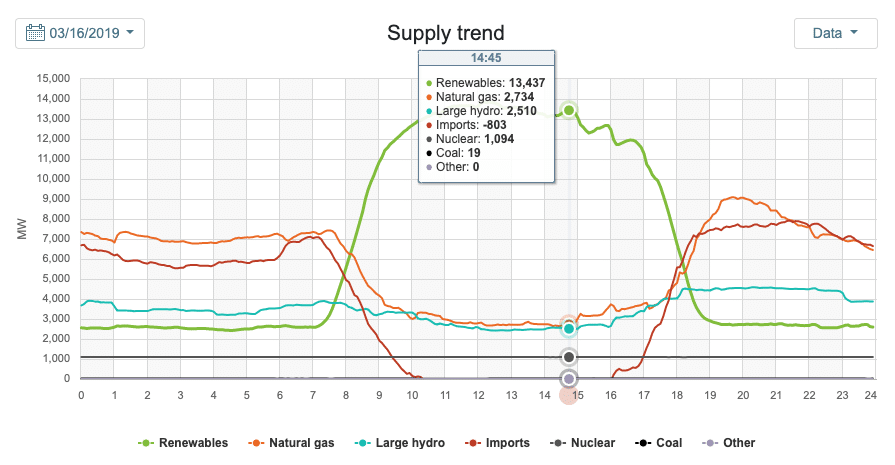
Minimizing curtailment
When there is too much power on the California grid, it has to go somewhere, and the solution has been to curtail wind and solar. Curtailment levels on March 16 were not as severe as might be feared, with only around 3,000 megawatt-hours of wind and solar curtailed over the course of the day. In fact, curtailment had been higher the previous Wednesday.
However, the trend this year so far is cause for concern. California had what LA Times describes as a “rare wet winter”, and this is expected to lead to high levels of hydroelectric output. As California’s hydro fleet is not as flexible as hydro plants in other regions, this is likely to exacerbate the conditions that lead to the highest levels of curtailment – namely maximum output from renewable energy and limited demand during spring due to cooler weather and less air conditioning use.
Curtailment in February was the highest on record, although March curtailment does not appear to be much higher so far.
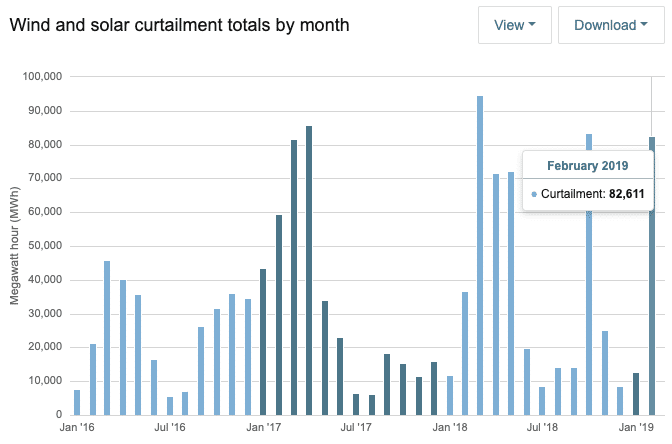
California could still wring a lot more flexibility out of its power fleet, including requiring greater flexibility from its gas-fired power plants and installing more batteries to both soak up mid-day solar output and meet evening demand.
Additionally, if properly managed, the introduction of electric vehicles could bring greater demand flexibility. But like Hawaii and now New Mexico, what California is doing as it moves towards 100% zero-carbon electricity still very much an experiment. We will see how it all plays out as the state continues to push the level of renewable energy deployment in the world’s fifth largest economy.
This content is protected by copyright and may not be reused. If you want to cooperate with us and would like to reuse some of our content, please contact: editors@pv-magazine.com.









“connected to the distribution grid likely produced around 50% more solar, meaning that the total output was likely somewhere around 1,600 MW.” Should be 16,000?
Yes, thank you for catching that.
I think you shifted a common and “total output was likely somewhere around 1,600 MW” should be 16,000MW.
Yes, we just fixed that. Thanks!
The imported power contracts will be coming up. It would be interesting to know that schedule.
And this is the best/worst case, a spring day with little load and a lot of sun.
But looking into the future, there will be a lot of cool/heat, EV, CSP, synfuel, etc storage that can suck up excess power and then sell it back at a
profit.
Especially EVs in 5 yrs will all have V2G and with huge 200 mile packs that are barely used need V2G in order to keep the chemicals active for longer life data has shown.
Each one of 100 million+ EVs could supply and charge 25kw in a normal home system, 2-10x that if needed.
Since home, buildings, businesses are going to do their own solar as so dam cheap, there will be a oversupply but that isn’t a bad thing, very good in fact cutting energy costs by 50% while stopping pollution.
Solar cell efficiency is max at low temperature and full sunshine … A plant may produce more power in cold bright days than hot months
An important new storage avenue in development is low pressure electrolytic anhydrous ammonia NH3 production with surplus renewable energy. This will reduce the large output of CO2 being produced by the current NH3 production method, while reducing existing importation of NH3 for fertilitizer and refrigeration uses. NH3 also has potential uses as a non- polluting fuel to replace diesel for farm equipment, locomotives, generators and gas turbines & possibly aircraft. Distribution infrastructure for NH3 already exists, and existing propane distribution could possibly be re-purposed for NH3 fuel. Higher hydrogen content, low pressure storage and ignition hazard makes NH3 a better & safer fuel than pure hydrogen.
https://www.energy.gov/sites/prod/files/2018/12/f58/Low-Pressure%20Electrolytic%20Ammonia%20Production.pdf
Was something happening with the sun on March 16th? I have a PV system with panels rated at 6100 watts. At 13:47 EDT (1747 UTC), I took photos of my inverter’s display showing an output of 7900 watts! Nice to be cranking that much power, but I haven’t noticed more than 6500 watts since. Anyone else see an increase like that on the 16th? Could California’s utility max on that date in this article be related?
While the afternoon of the 16th was definitely a time of high solar generation state-wide, I don’t know how a PV system could physically generate more electricity than the rated output of the panels which comprise the system.